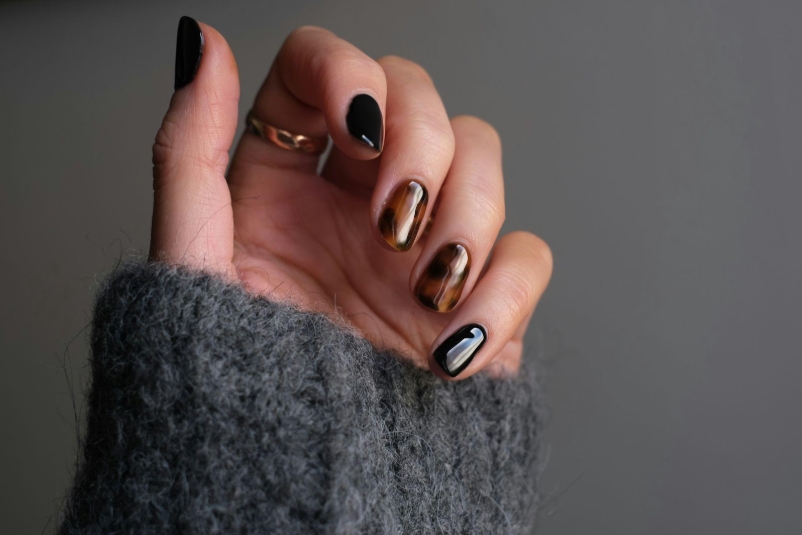
Nail art has long been a form of self-expression, but in recent years it has become something more: a thriving business opportunity. From Instagram tutorials to TikTok challenges, nail design is no longer just a beauty service, it’s a global economy in itself. Many aspiring creators begin their journey browsing nail gems for sale online, experimenting with designs at home before turning their passion into a small business. What starts as a hobby can grow into a career path, fueled by social media, e-commerce, and a rising consumer appetite for personalized beauty.
How Social Media Turned Nail Art Into a Market
Platforms like Instagram, TikTok, and Pinterest have transformed the way beauty trends spread. In the past, customers primarily relied on salons for inspiration. Now, a single video showing a gem-encrusted design can inspire thousands of recreations overnight.
This dynamic has created both opportunities and challenges. On one hand, aspiring entrepreneurs can reach global audiences without needing a storefront. On the other, the competition is fierce, and standing out requires consistent creativity and branding. The social proof generated by likes, shares, and followers often acts as a substitute for traditional advertising budgets, democratizing entry into the nail art business.
From Kitchen Tables to Boutique Studios
The accessibility of supplies is a major reason why nail art has scaled so quickly as a business. With affordable starter kits, clear tutorials, and wholesale suppliers, many artists begin from their own homes. For some, this is a side hustle; for others, it is the foundation of a future brand.
As demand grows, these home setups often evolve into boutique studios or collaborations with local salons. The transition from hobbyist to entrepreneur usually involves investments in training, certification, and professional tools. It also requires navigating business essentials such as permits, health regulations, and client management systems, steps that move a passion into the professional sphere.
The Economics of Nail Accessories
The boom in nail accessories, gems, foils, stickers, charms, has created a supply chain of its own. Sellers who once targeted professional salons now also reach at-home creators and small business owners. Online shops cater to every level of expertise, from beginners looking for starter packs to seasoned artists buying in bulk.
This niche has become part of the broader beauty economy, which according to Statista is projected to surpass $100 billion annually in the coming years. Within that growth, nail art represents a particularly dynamic segment, thanks to its blend of low entry costs and high potential for viral trends.
Building a Brand in the Beauty Economy
For nail artists hoping to expand, branding is critical. The product itself, nail designs, is replicable, but the way an artist presents their work can set them apart. This may involve curating a specific style (minimalist, avant-garde, glam), building a recognizable logo, or designing packaging for press-on nail sets.
Digital presence is equally important. Many successful artists use platforms like Etsy or Shopify to sell ready-to-wear sets, while simultaneously posting tutorials to YouTube or TikTok to generate traffic. In this ecosystem, the line between content creator and entrepreneur often blurs.
Scaling From Side Hustle to Business
Moving from hobbyist to full-scale entrepreneur involves strategic decisions. Should the artist continue to operate independently, partner with a salon, or open a studio? Should they invest in e-commerce platforms or focus on building a strong local client base?
Entrepreneurs often find themselves balancing creativity with logistics: sourcing supplies, managing customer service, tracking expenses, and handling taxes. Those who succeed tend to adopt a structured approach, setting clear goals for monthly revenue, client acquisition, or product launches.
Government resources, such as the U.S. Small Business Administration, emphasize that small beauty businesses thrive when they treat themselves like startups, tracking performance, reinvesting profits, and maintaining compliance with regulations. This professional discipline distinguishes long-term ventures from short-lived experiments.
The Role of Innovation
Innovation keeps the industry fresh. From UV-curing gel systems to 3D nail printing and augmented reality try-on apps, technology is transforming both how nails are created and how they are marketed. Entrepreneurs who stay ahead of these trends often gain a competitive edge.
Sustainability is also becoming a factor. Some brands now emphasize eco-friendly glitters, cruelty-free adhesives, or recyclable packaging, appealing to consumers who want beauty with a conscience. These shifts require adaptation, but they also open new niches for entrepreneurs to fill.
Measuring Success Beyond Profits
While profitability is the ultimate marker of sustainability, many nail entrepreneurs also define success in terms of influence and community. Building a loyal following, empowering clients to express themselves, or inspiring others to start their own journeys can be equally rewarding.
For many, the growth path begins with experimenting at home, evolves into building a local clientele, and eventually expands to selling internationally. Along the way, nail art businesses reflect larger themes in the modern economy: the rise of micro-entrepreneurship, the power of digital platforms, and the fusion of creativity with commerce.
The business of nail art illustrates how a hobby can transform into a profession in today’s digital economy. With low barriers to entry and high cultural visibility, it offers opportunities for both creative expression and financial independence.
What begins with browsing nail gems for sale can turn into a thriving enterprise, one that blends artistry, entrepreneurship, and community. For many creators, nail art is no longer just about beauty. It’s about building a business, a brand, and sometimes even a legacy.
Media Contact
Company Name: PLA
Contact Person: Michelle Nguyen
Email:Send Email
Country: United States
Website: plapro.com
